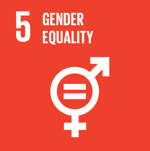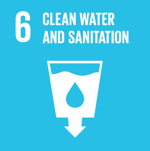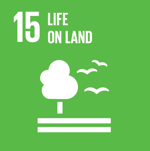Adaptation to climate change of family farming
 Argentina
Argentina
 Peru
Peru
Executive Summary
By the year 2050, the agriculture sector faces the challenge of increasing production by 60% to meet global food demand. In Latin America, arid and semiarid regions (where family farmers’ main income is extensive livestock breeding) are highly susceptible to climate change, environmental frailty and experience high levels of rural poverty. In these regions, research and innovation can increase production and efficiency while accounting for environmental changes. The Sustainable Intensification of Agriculture (SIA) is the best alternative to increase the efficiency and resilience of these production systems. In Northern Patagonia, Argentina, 90% of the 8,000 livestock producers are Family Farmers, and are currently in a deep crisis. Already suffering from recurring droughts, ash fall from the Puyehue eruption caused severe damage that the systems could not handle due to structural precariousness. In Perú, of the 824,000 livestock producers, 31% are poor and 13% are in extreme poverty. Over 50% of bovine stock are bred in areas smaller than 12 acres, with small herds, high production costs due to property fragmentation and weak market connnections.
The technological solution
The project now reaches more than 16,000 family livestock producers in Argentina and Peru through training, webinars, demonstration days, radio programmes and direct work on farms. The main technological solutions implemented to sustainably intensify and adapt their livestock systems to climate change are: animal management infrastructure such as paddocks and sheds; the collection, storage and transport of water for family and animal consumption; improvements in irrigation systems; cultivation of forage species as a protein and/or energy bank: strategic use of feed in the most important animal categories, and links to local markets through fairs and/or associative sales.
Results
More than 16,000 producers have been trained in management practices for climate change adaptation through different means of dissemination in the 4 regions of the project.
In Argentina, in the project's area of influence, silage production by family livestock farmers has more than doubled thanks to trials and training sessions. The production of forage for baling has increased by 50% in this sector, as have the services related to this activity. In Peru, the incorporation of improved pastures increased forage production in demonstration fields by more than 20% and this had a similar impact on milk production. Through training, the number of farmers willing to invest in improving their pastures is increasing, given the important results obtained in the trials. This has led to an 80% increase in water collection, storage and transport on family farms in some areas (Province of Neuquén, Argentina).
In terms of animal management, there has been a 30% increase in the use of electrically-fenced paddocks, and the demand for training in their installation and maintenance continues to increase.
In the province of Neuquén, Argentina, in the face of increased predation, the project supported the breeding of livestock guarding dogs (LGDs) and the training in their correct use. The presence of LGDs in herds of family farmers has increased by 400% so far, and demand is increasing. It is estimated that their presence has reduced predation by more than 50% on farms where this non-lethal method of predation control is used.
In terms of joint marketing, in Argentina the project has so far accompanied family producers to carry out formal sales of more than 72,000 kg of wool in the 2019-2020 harvest, who doubled their income through this form of marketing. Work continues through training, workshops and informative meetings on the incorporation of more producers given the advantage generated. The installation of drip irrigation systems in demonstration farms, the adjustment of their management by family farmers and subsequent on-site training of different trial communities and the public in general allowed an increase of more than 50% in vegetable production in areas where this technology was incorporated and this in turn increased the presence of fresh produce at local fairs and even the sale of surpluses to other regions by more than 60%. In Peru, there has been a 15-20% increase in milk production from producers trained by the project.
Beneficiaries
Sustainable Development Goals







Project news
Participating Organizations
Executor
- Fundación ArgenINTA (ARGENINTA) - Argentina
Co-executor
- Instituto Nacional de Tecnología Agropecuaria (INTA) - Argentina
- Universidad Nacional Agraria La Molina (UNALM) - Perú
Associated
- Cooperativa Agrícola Ganadera Calibui LTDA - Argentina
- Comité de Ganaderos Juan Guerra (Comité de Ganaderos Juan Guerra) - Perú
- Asociación de Ganaderos La Asunción de Matahuasi (Asociación de Ganaderos La Asunción de Matahuasi ) - Perú
Graphics and data
Financing by country (in USD)


































